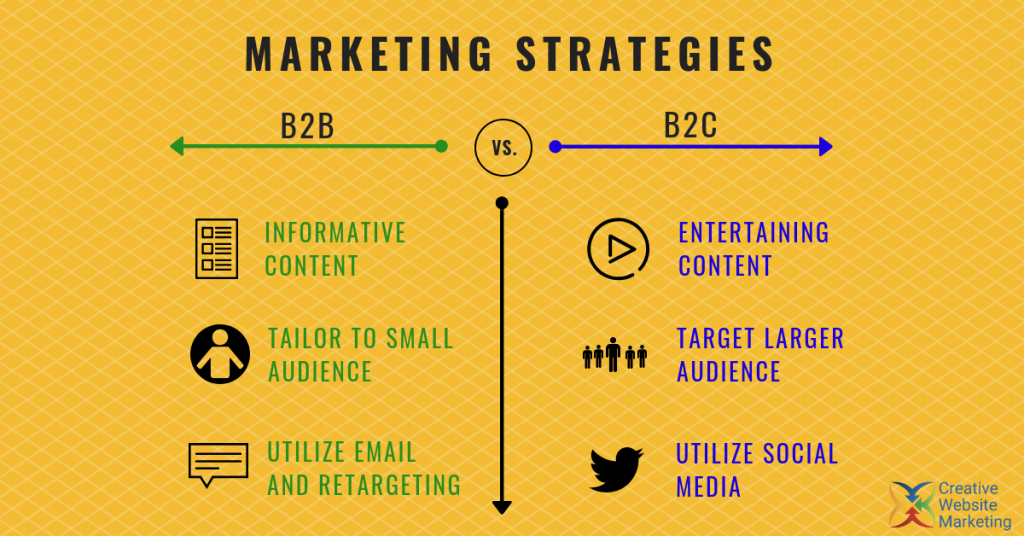There are distinct differences between how a small business should approach B2B marketing versus B2C marketing.
Here are some key differences a small business can evaluate and use to jumpstart the development of a marketing plan and strategy.
#1 – Syncing Marketing Touchpoints to the Sales Cycle
In B2B marketing, typically there are multiple decision makers in the chain of command, so the sales cycle takes longer. It helps to have an internal champion that believes your product or service is best suited to solve their business need or problem (example: patent attorney law firm services).
In B2C marketing, typically there is one decision maker. For this reason, the sales cycle is shorter for more inexpensive products or services and longer for more expensive products or services (example: senior living community services). Trust signals like reviews and the influence of others who have experience with your brand can really help win over new customers on the consumer side.
#2 – Evaluating Audience Size: Business vs. Consumer
Another major difference is that consumer audiences are typically much larger than business audiences.
Appealing directly to consumers on a larger scale can be expensive, so developing customer personas is a critical first step. Then, research where your audience spends time, and evaluate the best mediums to use in order to target them throughout the entire customer journey funnel (upper, middle and bottom). Focus groups can also be very helpful. Furthermore, digital channels like PPC can help scale your reach.
For B2B efforts, appealing directly to the appropriate businessperson at your target company can also be expensive. It can take multiple touch points to pique their interest and prompt them to explore if your product or service is the right fit for their organization. The business audience size also varies by industry. It is typically much more of a niche marketing effort, so market research can point you in the right direction and save on costly mistakes.
#3 – Content & Messaging
Developing a content plan for the B2B audience should be much more educational, with information highlighting key business improvements and backed up by data and research, if possible. Companies are looking for expertise, so this makes nurturing very effective. Good tactics to start with are email automation, paid search and display retargeting.
Developing a content plan for the B2C audience should be much more focused on personal benefits, ideally backed up by influencer marketing. Consumers are looking for deals, and they gravitate towards entertaining content. Thus, a good channel to start with is social media platforms.
Marketing and sales roles are evolving, and there has never been a better time to use new channels to support your sales efforts. If you are looking to improve your marketing strategy and are interested in how digital tactics can support your efforts, request a proposal today.

